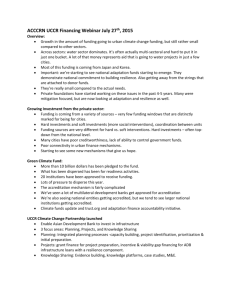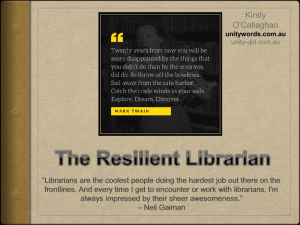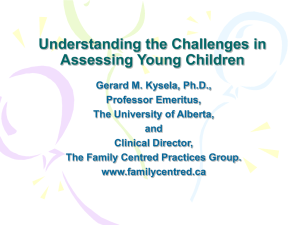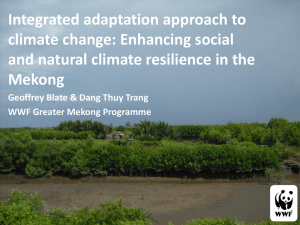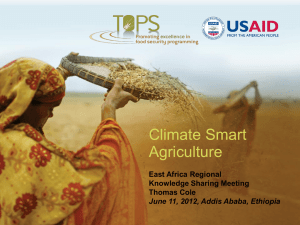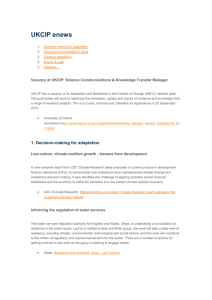Youth Programme in Three Cities
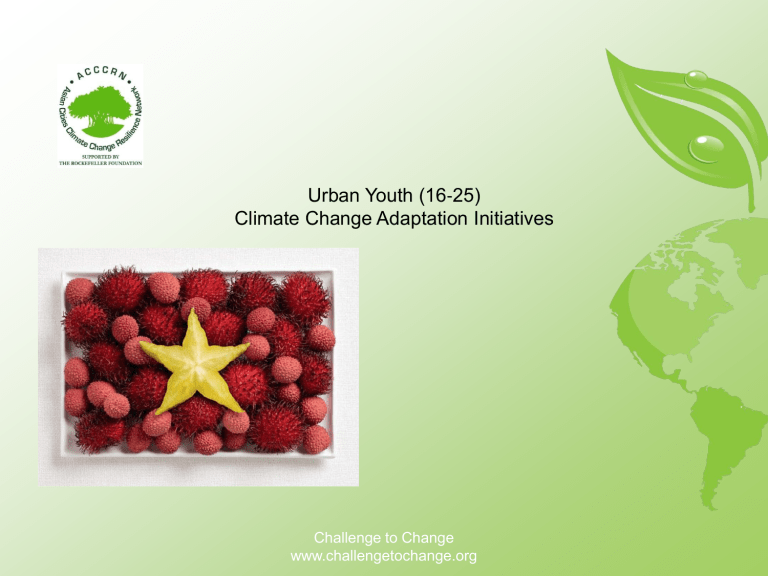
Urban Youth (16 ‐ 25)
Climate Change Adaptation Initiatives
Challenge to Change www.challengetochange.org
.
In contrast, today’s adults are the main stakeholders of now, a time when climate change is not severe.
When climate change becomes severe, today’s adults will retire, and have little reason to care.
They will not need to cope with significant climate change.
Challenge to Change www.challengetochange.org
Youth are the primary stakeholders of the medium-term
(5 to 50-year) future, the period when climate change will have its greatest impact.
But Youth are marginalized from current decisions to cope with the future impacts of climate change.
In the 1970s, development practitioners like Robert
Chambers learned the importance of including main stakeholders in planning and decision-making regardless of their social, political or economic status.
These ideas became known as ‘ participatory approaches ’ – PRA, PLA, PME etc.
The same participatory approaches of including the main stakeholders –
Youth – in climate change plans and decisions, must now be applied .
Challenge to Change www.challengetochange.org
Youth are the best Change Agents, because:
They are motivated by strong ideals
They are willing to take risks
They have a lot of energy
They are trend-setters for others
And they are highly communicative.
But they lack power, technical knowledge, and material resources.
Challenge to Change www.challengetochange.org
AYIP (the ACCCRN Youth Initiatives
Program) is funded by the Rockefeller
Foundation under the Asian Cities
Climate Change Resilience Network
(ACCCRN).
AYIP is implemented by CtC and the
Vietnam Youth Union in Quy Nhon ,
Da Nang and Can Tho cities.
AYIP enables Urban Youth aged 16 to
25 to implement their own climate change adaptation initiatives.
About 15 to 20 Youth Groups are supported to implement initiatives of value between USD 500 and USD
5,000, from April 2012 to July 2013.
Challenge to Change www.challengetochange.org
AYIP also encourages active collaboration between government agencies and Youth Groups in the three cities.
This enables
Youth to learn about climate change initiatives, and enables government agencies to see climate change from a new angle.
Challenge to Change www.challengetochange.org
AYIP is just beginning in mid 2012. Proposals from Youth for their initiatives include:
1. Support to a vulnerable neighbourhood or community, to analyse their vulnerabilities and elaborate solutions
2. Research into existing ways people are adapting to climate change
3. Support to enhance existing community-based adaptation
4. Support to new adaptation/resilience initiatives
5. Adding value to existing government or ACCCRN climate change initiatives
6. Documentation of a climate issue in the city
7. Start-up of a longer term cooperation, network or service for urban climate change resilience
Challenge to Change www.challengetochange.org
In this way Youth communicate their ideas and values, and we see climate change resilience through their eyes.
Youth Unions makes videodocumentation of their climate change initiatives. AYIP provides each city Youth Union with a video camera, and provides digital film editing training.
The program takes advantage of
Youth characteristics as good
Change Agents and trend-setters who are highly communicative.
Challenge to Change www.challengetochange.org
AYIP Key Outcomes are :
• The enhancement of Youth rights to address climate change, (Rights-Based Approach), and the emergence of Youth climate champions
• An understanding of urban climate change resilience (UCCR) through the eyes of Youth
• The spread of climate change awareness through existing Youth networks using multiple media, creating conditions for communitybased adaptation .
Challenge to Change www.challengetochange.org
Challenge to Change www.challengetochange.org

